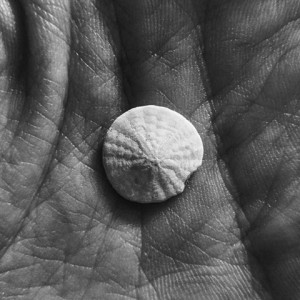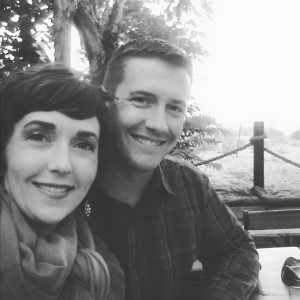
I have been avoiding this blog post. I don’t know why. This is a celebratory post, a post of gratitude for time, transition and transformation.
*
Sometimes the hardest part is finding the first word. Sometimes the hardest part is going inward, or going outward. After so much outward, what I crave right now is inward. This blog post is outward, so I have avoided it. This morning, a taught wire of energy presents itself to me, strung between these two modes of being. I pluck it and it offers a first note.
*
The first note is tattered pipevine swallowtail.
Touch the string in one place and pluck it again: half-eaten green darner, the second note.
The third: honeybee, pollen baskets full.
Found shells of all sorts and sizes, from sand dollars smaller than dimes to clams wide as the span of my hand.
Sea glass and beach rocks.
Salmon bones and teeth.
Bird’s nest.
These are some of the objects that dot the over-full shelves in my writing room, which is where I write now. The way in is where I am.
*
Five years ago, I did not have a writing room. I learned I needed to make this space for myself, and Charlie, my husband, helped me. His office was in the room I wanted, the room I needed, the room with better light and a window that looks out at the street, instead of—like the other spare bedroom—a fence and a wall.
*
Most of the objects that dot my shelves also dot my poems. They more than dot my poems; they are many of my poems.
Charlie found most of these, while out on his long runs along the river, and gave them to me. Or he found them when we were walking together, like the beautiful bird’s nest, which I carried home as it teetered on a large slab of flaking tree bark. The bird’s nest is one of my favorite objects, mostly because of its fragrance, which I note in a poem as a combination of black pepper, cinnamon and vanilla. Who wouldn’t want to circle into its fabric of twigs and bird down and sleep and dream?
*
Dream.
I am living large parts of mine through the many-faceted gift of teaching creative writing in the community. Teaching keeps me reading and learning from the writers who have come before me, so that I can pass along that magic to my students and incorporate it into my own practice (a first gift); also, my students teach me, both to write better and to live in greater wholeness (a second gift). As I lead and am lead by my students, I become my best self in the classroom: deeply present, aware of my thinking, and choosing to be as open and nonjudgmental as I can. As the only one at the table required—by the Amherst Writers and Artists (AWA) approach in which I work—to share her freshly written drafts, in that space I have the strength to open the doors and windows to my deepest fears and loves, as well as to my odd, obsessive thinking, and see what happens when the warm wind of creative expression gusts in and rearranges old wounds and hopes into new feelings and ideas. Other writers at the table can choose to do the same, and through this we all have the chance to experience respect, witnessing, honoring and healing.
It’s this kind of space we need in which to draft, play with, revise and publish our very best writing. Teaching keeps me creating new work (a third gift), and playing with that work, and revising that work and publishing that work alongside my students (a fourth gift), who are also my first readers, my teammates, my friends.
*
Five years ago this month, I began teaching my first community creative writing workshop in Sacramento. I taught my first workshop out of fear. I never wanted to run my own business. I didn’t think I knew enough, was accomplished enough, to succeed in running workshops on my own.
But the greatest fear of all was that I would not write, or be around writers, anymore if I did not teach.
I had had, for three years, my dream job. I didn’t know it was my dream job until I had it. I was an arts administrator for UC Davis Extension. I spent my days talking with writers, dancers, filmmakers, painters. Together, we created programs. I learned how to structure coursework in the arts, and how to budget and create marketing plans and plan events and evaluate instruction and instructors. I got to learn from amazing writers at The Tomales Bay Workshops, one of our flagship programs, each year at this time, and I also received an employer-paid week of immersion in the AWA method with its founder, Pat Schneider (and later was given leave to attend AWA affiliate training). Once I learned how to do my job, I realized I had stumbled into my dream job, and the knowledge of the precariousness of my finding of it made me soon realize the precariousness of my having it.
I was hired in March 2008, just as the U.S. economy entered major recession. By 2011, UC Davis Extension was cutting a number of programs that had not, or no longer, paid for themselves. The arts programs had run at a significant deficit for their entire thirty-year existence, but times had changed and the organization determined it could no longer justify the loss.
Though, in 2011, UCDE moved me to another position (for which I remain terribly grateful, and still occupy to this day), this position moved me outside of the arts world and into an entirely different part of academia.
In fall 2011, my position converted entirely to the new role. I panicked. My job, I realized, had conveniently provided for me all the writing community and motivation to write that I needed in my life. Where would I find writing community now? How was one to go about structuring a creative life, when one was now working essentially full-time outside the creative world?
The only thought that made my panic diminish was that of offering my own workshop. With a few student contacts I’d made in a couple of courses I taught in the UCDE writing program, I created my first community workshop. It began October 28, 2011, in the (lovely) home of one of the students.
That workshop fed me as it fed my students.
It saved me.
*
Five years of workshops, by the numbers:
- Eight-week workshops: 25 (5 each year) – plus ad hoc one-day workshops here and there
- Individual workshop sessions: More than 200 (and I have repeated material in only a handful of these)
- Hours at the workshop table: More than 500
- Hours preparing for workshop: More than 500
- Alumni: More than 100 (plus another 150 or more from special event workshops)
- Alumni publications: I haven’t formally tracked this, but a quick glance at archived e-newsletters suggests it’s more than two dozen
I look at these numbers and I feel surprised, proud, grateful and—honestly—a little worn out!
*
Charlie has a dream, too. For four and a half years of pre-reqs, volunteering, applications and interviews, he has been preparing to return to school for a second bachelor’s degree. His first was in photography, a career field whose technology has changed at an insanely rapid pace and made those very careers much harder to build, especially in smaller cities. His second will be in medical imaging, a field whose technology is also changing, but at a pace that is (conversely) favorable to those just entering the field. To fulfill this dream, Charlie is letting go (for the time being) of many of his great loves: ultrarunning, the river, art photography, and time with me. He is embracing commuting, distance, mental fatigue, and thousands of hand-made flashcards.
In order to support Charlie by working to create as much space as possible, in our life together, for his schooling and career transition, I too am letting go of things I love. I am taking a six-month sabbatical this fall and winter from teaching my weekly workshops. I am embracing cultivating more responsiveness and flexibility in my life, so that I can care for Charlie, and for myself, more attentively in this different time. I am inviting transformation in my writing workshops (I am offering my first monthly workshop beginning this fall, and look for one- and two-day weekend workshops from me in the winter, as well as increased availability for one-on-one work). I am learning to be in solitude more, something I used to fear in some respects and which I now find that I love (and have been needing for a long time). I am devoting this solitude to evening reading, something I was not able to do for several years as a result of a complex of health issues, and to my writing practice as I work through a deep revision of my book-length poetry manuscript, with the intention of submitting it for publication in the coming months.
*
Charlie’s dream, by the numbers:
- Years of school: 2 (year-round)
- Estimated miles he will drive: 52,000
- Estimated hours he will spend in class, in clinicals and studying: 7,000+
- Bones in the body he will learn to image: All 206 of them
*
Charlie won’t be bringing me objects from the river anymore. Our world is changing. I will have to find new objects and share them with him. Perhaps he will bring me objects from the new paths he is traveling, through classrooms and labs and hospitals. Already he is bringing me intellectual artifacts from his classes in radiation physics and the history of X-ray technology. Together, we are learning a new language for the body, and new ways of living with and loving each other in the midst of change and distance.
*
This fall, I am thrilled to be celebrating this five year milestone, even as my life changes again. Without the commitment of my fellow writers and students, and the love and support of Charlie many others in my family and friend circles, my workshops and this moment would not exist. I can’t wait to see what the next five years bring!
Thank you~
